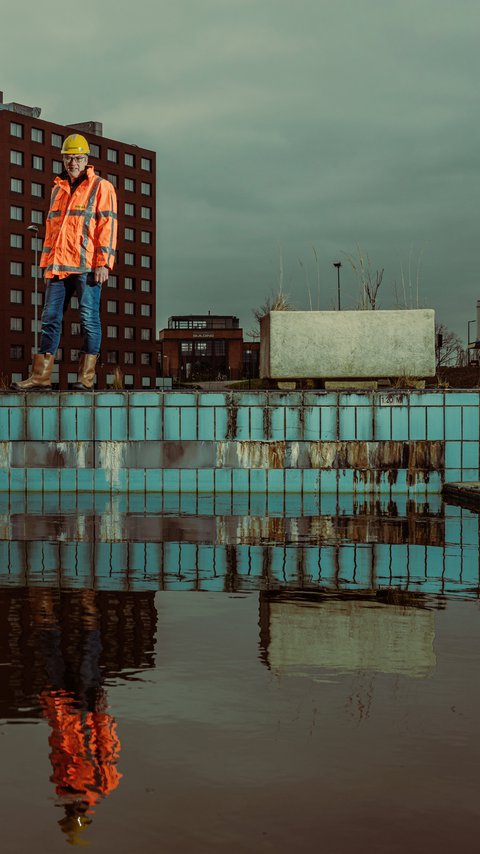How do we create a healthy living environment?
Water shortages, subsidence and transient flooding will increase the coming years. Building higher and storing water is essential, according to Hans Diender, climate adaptation specialist at Heijmans. “View water as a gift.”
In the Netherlands, fighting water is in our blood. Now, it is actually time to fight for water, says Hans Diender, advisor at Infra’s design team. The Netherlands is slowly but surely drying up. Despite an increase in extreme showers, the groundwater level continues to decline. This way, each dry period accelerates natural subsidence.
“Especially the peat and clay soil in North and South Holland is drying up”, says Hans. “That hits pretty close to home, because a low groundwater level affects all of us. For instance, it is detrimental to old wooden foundation piles. If those rot away, they won’t offer stability anymore to the homes on top of them. A loss that could run into billions.”
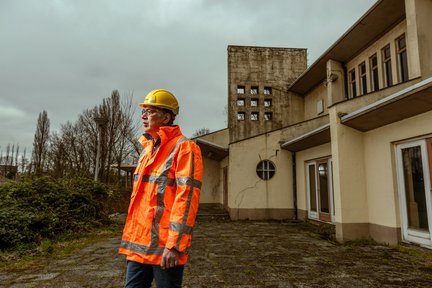
A low groundwater level does not make it any easier to prevent heat stress. “You prevent heat stress by making a city greener”, says Hans. “A ten percent increase in flora will make it half a degree cooler. However, no water means no green. Young trees cannot reach the dropping groundwater anymore. Bushes and plants will die in the barren soil.”
There is a reason why we lived on mounts in the past
Cloudbursts
And what about those extreme showers, which have been plaguing our country lately? Those do not benefit our groundwater level, says Hans. Due to our increasingly warm climate, it generally rains harder and it is dry more often, according to the KNMI (the Royal Netherlands Meteorological Institute). After all, warmer air holds more water vapour, which results in more heavy showers. “Cloudburst make up for only once percent of all yearly showers. However, the ground absorbs more water if it rains for a longer period of time. On top of that, the increase in paving makes it difficult for rain water to flow away and it causes flooding.”
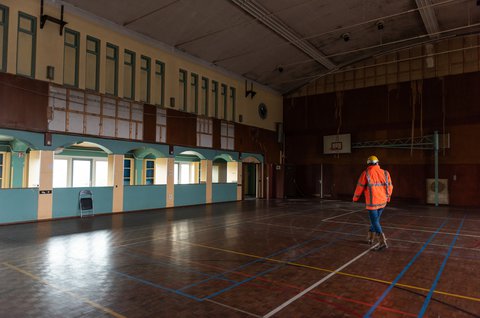
Live higher
According to Hans, we are facing a two-fold task: “Limit flooding to a minimum by draining water properly and by storing water from regular showers..” Hans believes the first challenge can be solved with higher building piles. “There is a reason why we lived on mounts in the past. You keep your feet dry and create space to store water underneath homes. You can do so through the use of, for instance, a ‘water storing road’, an underground ditch. Rain water will quickly flow away to storage buffers, even in case of cloudbursts. It makes it easier to maintain the groundwater level.”
De Blauwe Ader
Hans: “As long as we do not raise homes, extreme rainfall will not only cause wet feet more often, but will also result in a shortage of space for water storage. The ground is covered with cables and pipes. Due to the energy transition, that volume will increase further the coming years. Before we start building, we need to organise, in order to create space. Something that is easier to do in outer areas and harder in cities, though not impossible. A good example is De Blauwe Ader in Tilburg. An underground moat which separates clean rainwater from wastewater and drains it to a storage facility outside the city. A storage you can draw from in dry periods.”
Draining above ground
As cloudbursts are becoming more and more intense, we have to drain increasingly more water during heavy showers, Hans predicts. “Water buffers cannot handle a short heavy cloudburst. So, why do we not lay out our streets as drainages? A Blauwe Ader, but then above ground? If your home is located on higher ground, it doesn’t matter if the street is flooded once in a while. It will take some getting used to, because the Dutch usually believe there should be no water out in the streets. That is partly our own fault. We technicians have always solved everything. We put a bigger sewage pipeline in the ground and drained the sewage in one straight line to sea.”
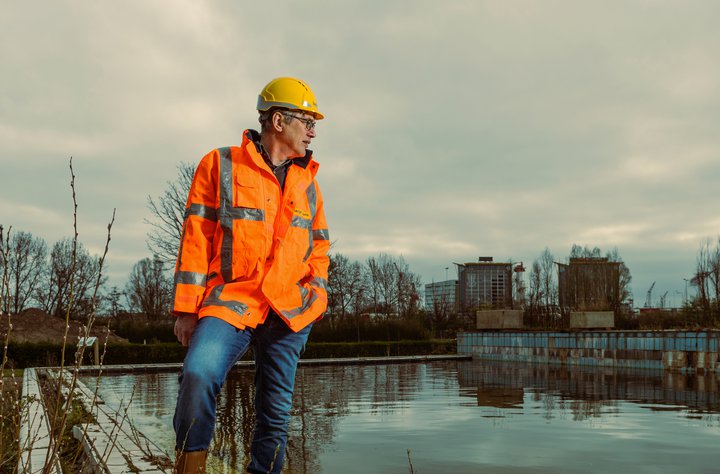
As cloudbursts are becoming more and more intense, we have to drain increasingly more water during heavy showers, Hans predicts. “Water buffers cannot handle a short heavy cloudburst. So, why do we not lay out our streets as drainages? A Blauwe Ader, but then above ground? If your home is located on higher ground, it doesn’t matter if the street is flooded once in a while. It will take some getting used to, because the Dutch usually believe there should be no water out in the streets. That is partly our own fault. We technicians have always solved everything. We put a bigger sewage pipeline in the ground and drained the sewage in one straight line to sea.”
Green gardens
Our view on water around our home must change as well. Hans: “Water is scary and difficult. A wet crawl space is annoying. While the water is for free. A present if you ask me. Use this water to flush your toilet or water your garden.”
Developers are often ahead of home buyers when it comes to a climate adaptive mindset. “In many area developments, Heijmans delivers homes with beautiful green little gardens. However, after a while, these are often paved for, for instance, an outside kitchen.”
It is tough to convince residents to handle water differently. Hans: “Maybe it would help if we make our drinking water far more expensive. Then people would realise it is better to collect and store water. Because watering your garden with drinking water is too expensive.”
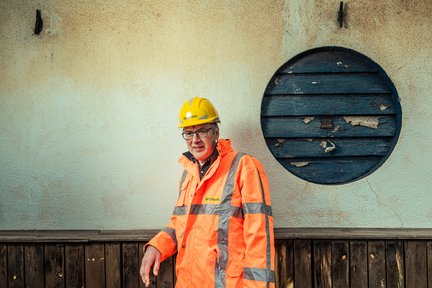
Collaborate
Hans believes authorities could also play a part in this, by initiating and collaborating more. “I recently looked into the climate adaptation strategy of thirty municipalities. They all turned out to be different. There is real process to be made if authorities carry out a central and less fragmented strategy.
And this is where Heijmans loves to contribute ideas. Hans: “And preferably in the early stages of the building process, like in a building team. In order to show that this works, my team and I organise climate workshops. Water experts, clients and builders get together to determine which solutions suit a certain project. Water boards are essential in all of this. Please let them play a part in the design phase. They own all the knowledge on our water system.”
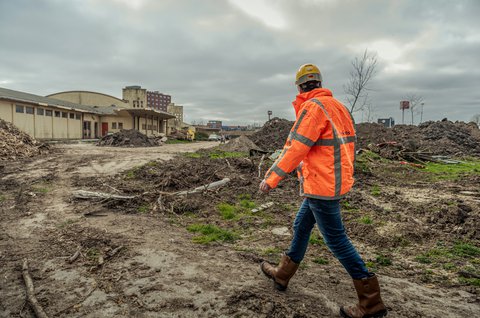
City Deal
A couple of years ago, Heijmans was one of the first construction companies which recognised the value of futureproof water management. “When we signed the City Deal Climate adaptation in 2016, we were the only builder there. Fortunately, things have changed. Now we share and use knowledge in the field of climate adaptative construction with various municipalities, water boards, builders and companies.”
Raise, collect and store
Subsidence will be the main challenge in the decades to come, states Hans. “In some low-lying areas, ongoing subsidence will cost a great deal of money. Everything is possible technically, but we must ask ourselves how long can we afford to keep our feet dry this way? Either way, we are not solving the issue of drought.”
“That is why I believe that in the Netherlands we should move on to building higher as soon as possible. The only way to keep our feet dry in case of flooding and to create room for water storage. We also should not view water as a threat anymore. So, collect, store outside of the city and use when we really need it, without losing sight of water safety.”
